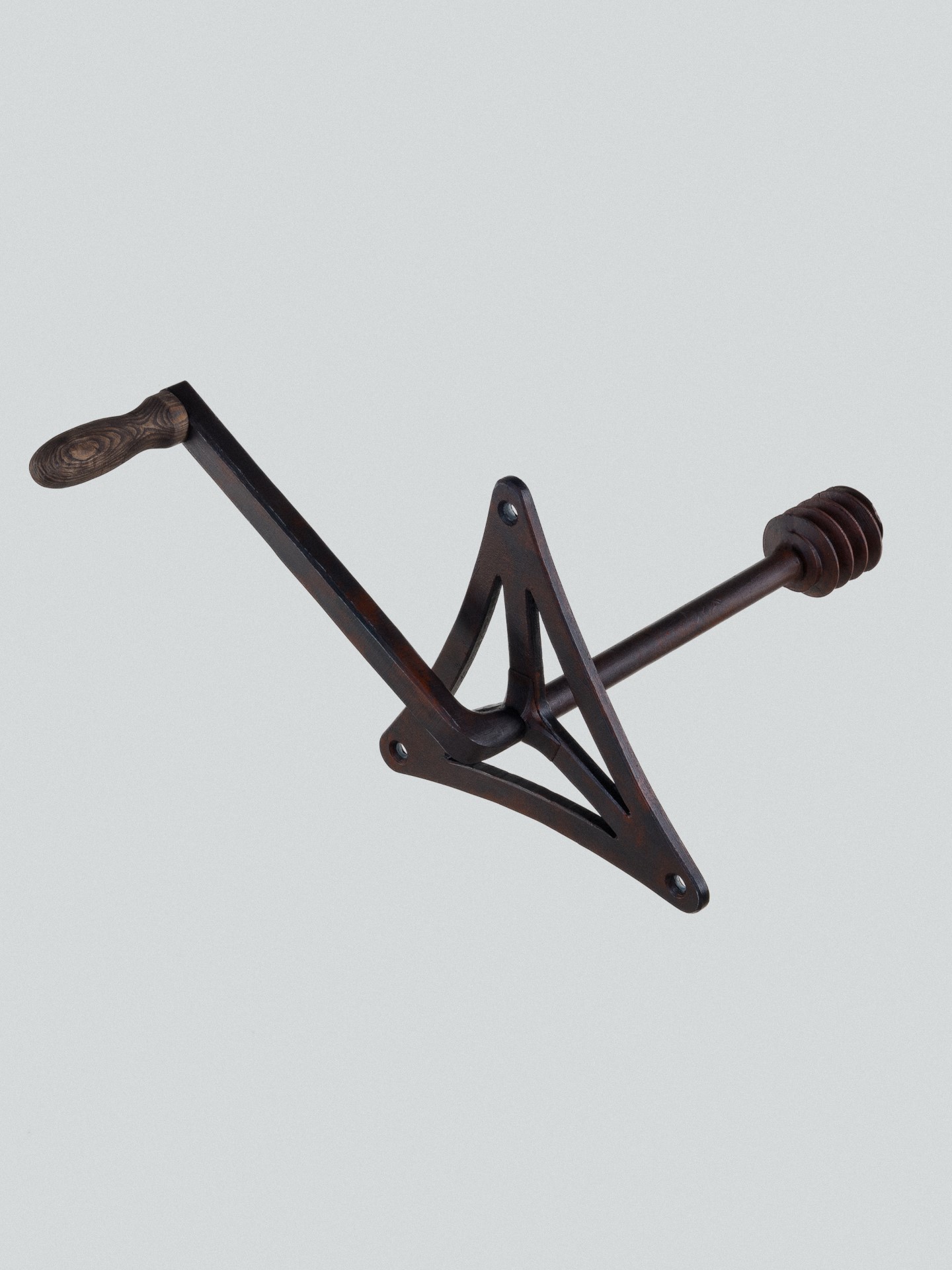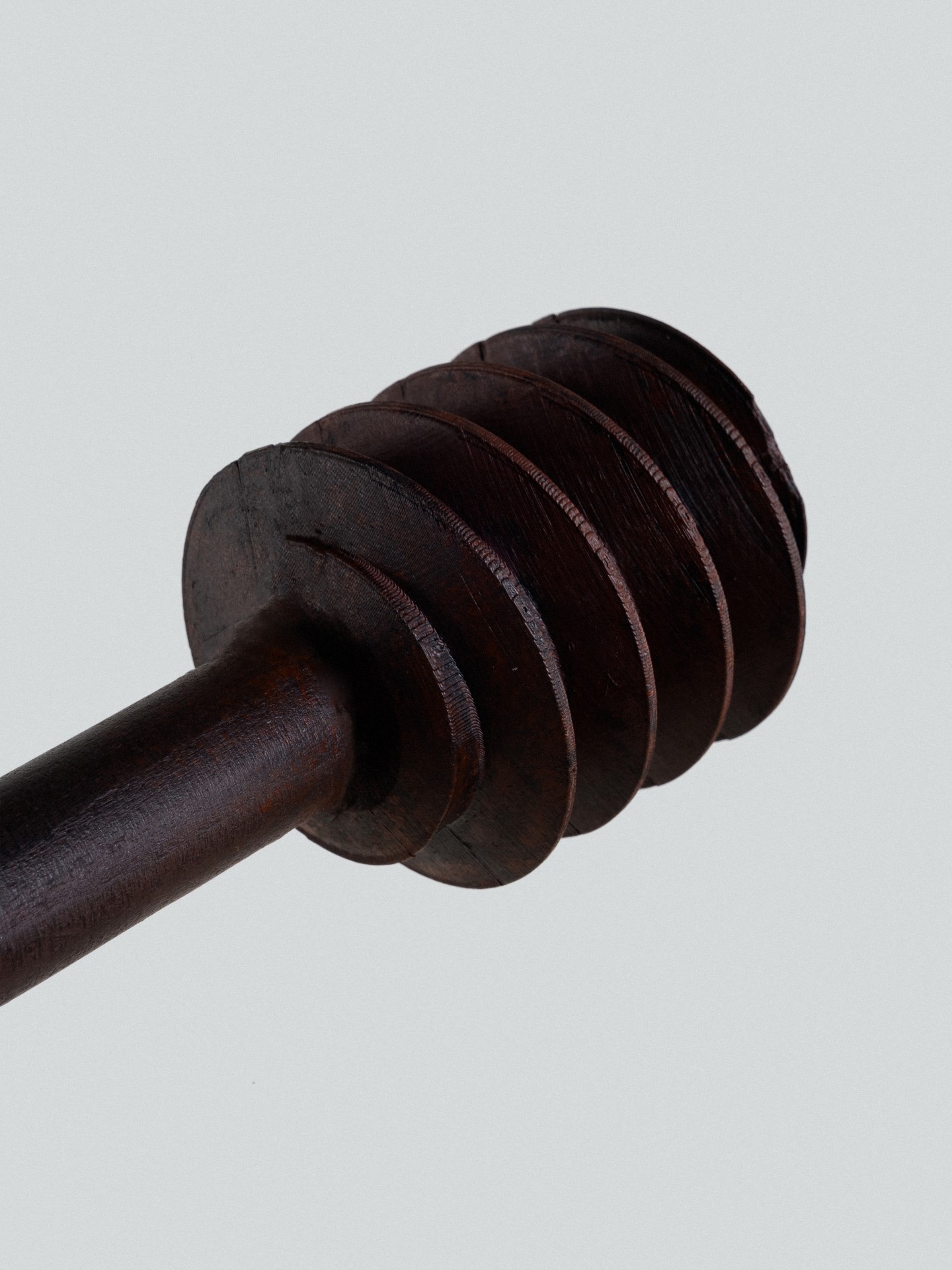The “chidder-puller” was an essential tool in early watchmaking. This tool was used to operate and start the mechanism of early church clocks. It derives from the word “chidding”, a village term of “chilling”. The villagers considered it a very quick operation, and that master would just be winding (chidding -> chilling) clocks up in the church tower and charge a lot of money for it at the end.
Church clocks at that time were mechanically operated pendulum clock work that had to be wound up at certain intervals. Two heavy pendulums set the escapement of the mechanism in motion, which started the clock. Each master had his own tool, which could only be used for his own work. There was a great deal of secrecy surrounding these tools, to the extent that almost no written or pictorial sources have survived, apart from a couple of rumours and a few poorly preserved blueprints.
The winders were handed down from father to son or from watchmaker to apprentice, so that the clock movements remained in use after the death of the craftmen.
With the advent of industrialisation, these traditional movements were gradually replaced by electric motor-driven counterparts, so that the memory of the chidder-puller has now almost entirely disappeared from our consciousness.


